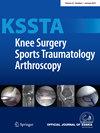Application of a machine learning and optimization method to predict patellofemoral instability risk factors in children and adolescents
Abstract
Purpose
Conservative treatment remains the standard approach for first-time patellar dislocations. While risk factors for patellofemoral instability, a common paediatric injury, are well-established in adults, data concerning the progression of paediatric recurrent patellar dislocation remain scarce. A reproducible method was developed to quantitatively assess the patellofemoral morphology and anatomic risk factors in paediatric patients using magnetic resonance imaging (MRI) and machine learning analysis.
Methods
Data were analyzed from a retrospective review (2005–2022) of paediatric patients diagnosed with acute lateral patellar dislocation (54 patients) who underwent MRI and were compared with an age-based control group (54 patients). Patellofemoral, tibial, tibiofemoral and patellar height parameters were measured. Differences between groups were analyzed with respect to MRI parameters. The potential diagnostic utility of the parameters was assessed via machine learning and genetic algorithm analyses.
Results
Significant differences were observed between the two groups in six patellofemoral morphological parameters. Regarding patellar height morphological parameters, all methods exhibited significant between-group differences. Among the tibia and tibiofemoral morphological parameters, only the tibial tubercle–trochlear groove distance exhibited significant differences between the two groups. No sex-related differences were present. Significant variations were observed in patellar height parameters, particularly in the Koshino–Sugimoto (KS) index, which had the highest area under the curve (AUC: 0.87). Using genetic algorithms and logistic regression, our model excelled with seven key independent variables.
Conclusion
KS index and Wiberg index had the strongest association with lateral patellar dislocation. An optimized logistic regression model achieved an AUC of 0.934. Such performance is considered clinically relevant, indicating the model's effectiveness for the intended application.
Level of Evidence
Level Ⅲ.




 求助内容:
求助内容: 应助结果提醒方式:
应助结果提醒方式:


